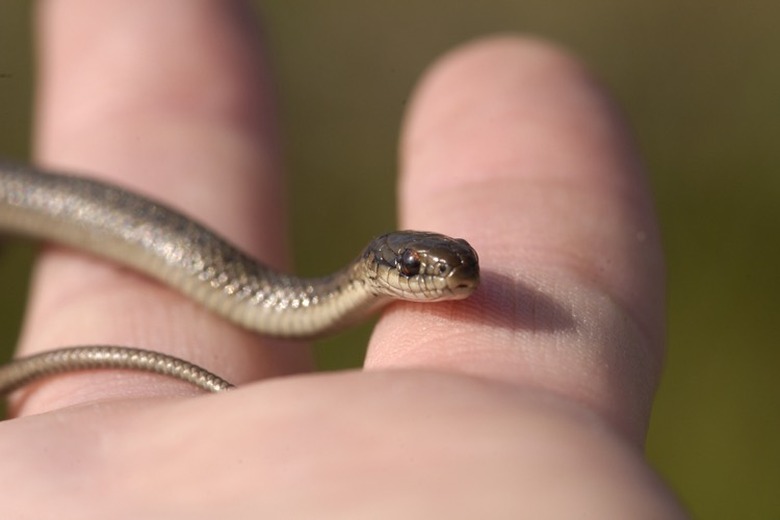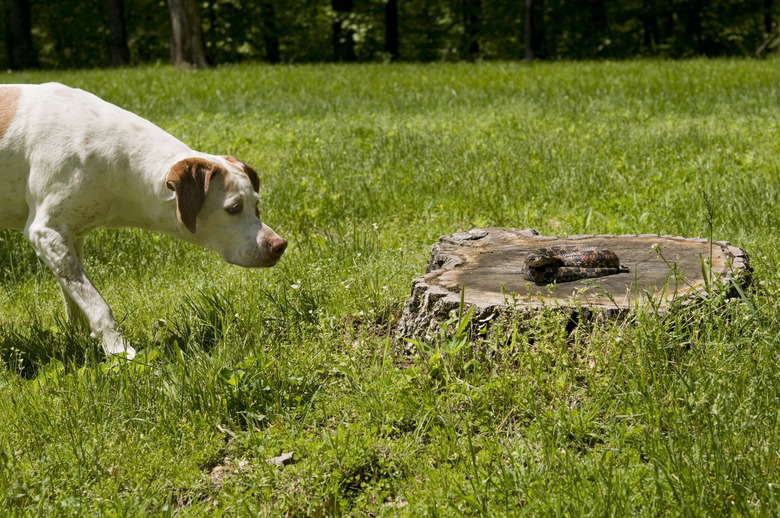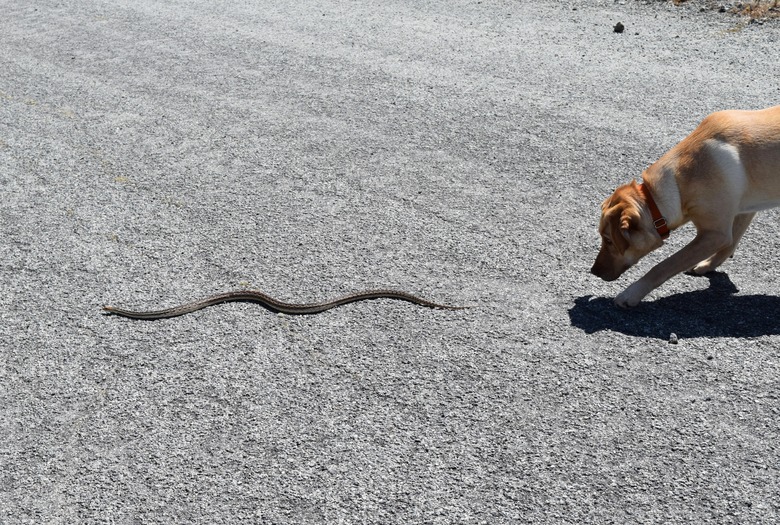Garter Snake Bite: Are Garter Snakes Dangerous To Dogs?
During months of warm weather, you might find your dog is sharing the yard and garden with some slithering snakes. While some snakes in the garden may be a concern, garter snakes are generally harmless. These snakes are quite common, and it is beneficial to keep them around since they feed on many common garden pests, such as slugs, snails, and small rodents.
Garter snakes in the garden
Garter snakes in the garden
There are a number of species of snakes in the genus Thamnophis that are all commonly referred to as garter snakes. They vary in appearance and color but are generally thin snakes that grow approximately 2 to 3 feet long. They often have stripes that may be a variety of colors, including white, yellow, or red. You may encounter these snakes in a variety of habitats, including grasslands, wetlands, forests, and even your backyard.
Garter snake defenses
Garter snake defenses
Garter snakes prefer to escape when threatened by a predator, such as your dog, but they will bite if cornered. These snakes are considered mildly venomous. Their venom does not affect humans, but amphibians and small animals may experience minor toxicity from a garter snake bite. Your pup may experience some irritation if he is bitten, but it is unlikely to be serious.
A garter snake's other defense is the secretion of a bad-smelling fluid from its anal glands. It may cause your dog to gag, drool, or vomit, and he may be stinky when he returns to the house after a garter snake encounter, but this spray isn't toxic, and even if your pup eats the snake, he should be just fine.
Garter snake bite treatment
Garter snake bite treatment
In most cases, no veterinary treatment is necessary for a garter snake bite. Simply wash the bite wound with soap and water and keep it clean to prevent infection. During the first 48 hours after a bite, the area may be bruised and swollen. If swelling worsens or your pup shows signs of infection, be sure to take her to the vet for treatment.
Preventing snake bites
Preventing snake bites
While garter snakes are fairly harmless, there are several species of venomous snakes throughout the United States, so you don't want to let your dog think that snakes are an acceptable form of entertainment. High grass can hide a snake, so keep your lawn mowed. Snakes and the rodents they like to eat may hide in woodpiles, so make sure these types of hiding spots are positioned away from your home and where your dog likes to play.
Keep your dog on a leash when hiking in areas likely to have snakes and consider enrolling your pup in a snake avoidance training class. Make sure they use positive reinforcement techniques. In addition, teaching your dog some basic commands, such as "leave it," can help to keep your dog safe when he is off leash.
Venomous snake bites
Venomous snake bites
The main venomous snakes you may encounter include rattlesnakes, copperheads, coral snakes, and cottonmouths. Symptoms of a venomous snake bite include swelling that quickly spreads and bleeding from the wound. Other symptoms depend on the type of snake venom affecting your dog.
Rattlesnakes, cottonmouths, and copperheads are all members of the Crotalidae family, and common bite symptoms include vomiting, diarrhea, drooling, and small blood spots in the skin called petechia. Symptoms of a coral snake bite include drooling, weakness, drowsiness, and muscle tremors.
If your pup comes inside with what appears to be a snake bite and you don't know what type of snake is the attacker, it is best to take your dog to the vet clinic, keeping her as still and calm as possible. Treatment depends on the bite and symptoms and may include antivenin, pain medication, antihistamines, antibiotics, and IV fluids. The sooner your dog gets treatment for a venomous snake bite, the better her prognosis.


